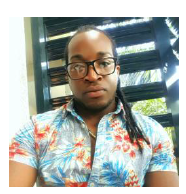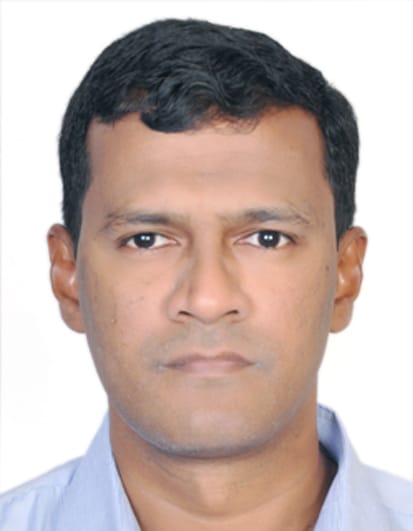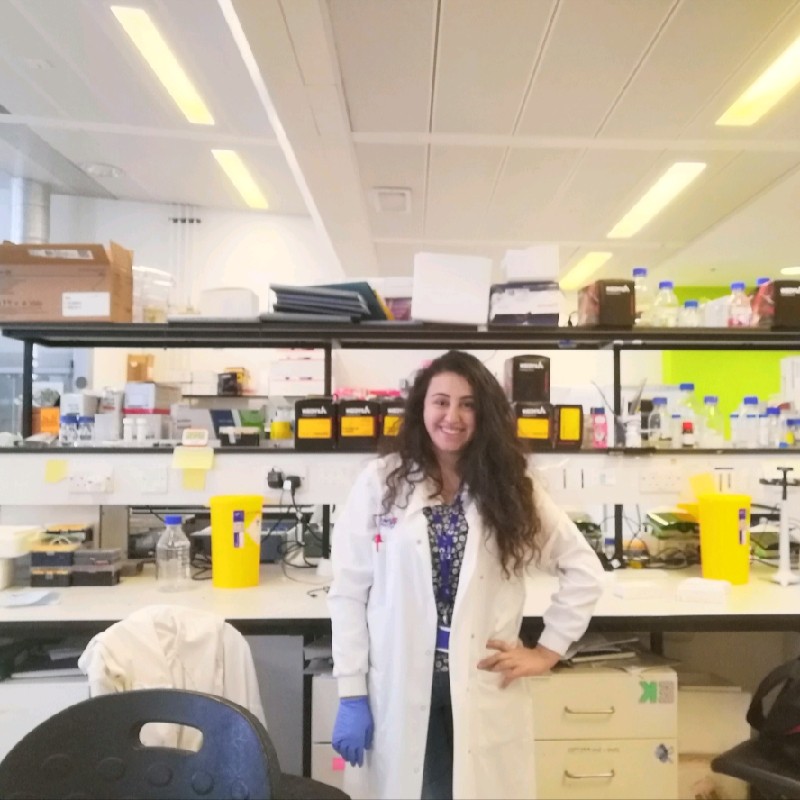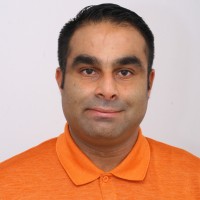Scientific Program
Keynote Session:
Title: The important benefits of different foods in the fight against cancer
Biography:
Daniela Capdepon, received from Medica at 22 years old and graduated with Honors from the medical school. She completed her Specialty in Clinical Oncology at the Universidad del Salvador, Buenos Aires, Argentina. She became the Medical Director of the Campana Cancer Center at age 32. She has many presentations at international congresses as well as being part of the organizing committee of several international congresses.
She also has more than 20 publications and has served as a member of the editorial board of renowned magazines.
Abstract:
There is no doubt that eating correctly and in a healthy way prevents us from developing certain diseases. More and more, doctors show and reveal that some cancers are closely linked to what we eat.
In fact, experts say that more than 50% of cancerous tumors could be prevented with a healthy diet. Fruits, vegetables, and greens, among many other foods, are part of anti-cancer foods.
Many foods have been identified as anticancer agents, such as oily fish, olive oil, berries, walnuts, garlic, and broccoli, among others.
Today, modern medicine relies on careful study and isolation of compounds or proteins from these products, however, this can be very difficult to achieve as these products are often made up of dozens or hundreds of proteins.
This is why developing a safe, effective, and reproducible drug is a challenge since the composition of a pharmacological product depends on several methods to be used and developed.
Title: An Assessment to Determine Total Scatter Factors for Photon Beam Linear accelerators
Biography:
I am a final year PhD candidate at the University of the West Indies (UWI), Mona Campus, Kingston Jamaica doing research in Applied Physics. I am also pursuing a Post Graduate Certificate in University Teaching and Learning. I possess a Diploma in Sports Therapy, BSc in Diagnostic Imaging and an MSc in Medical Physics. I am currently employed as a Senior Medical Physicist and Radiation safety Officer at the Kingston Public Hospital and adjunct assistant lecturer at UWI. I am actively involved in radiation therapy treatment planning, and perform diagnostic and therapeutic quality assurance for radiation generating equipment. I conduct staff training and sensitize patients about their procedures. I have been involved in the medical use of radiation for the past 13 years; I have a passion for radiation safety and management and have published 6 research papers about same.
Abstract:
Objectives: To explore a simple and effective way to determine the total scatter of a C- Series linear accelerator.
Methodology: Measurements for this study were acquired using a Varian C-Series linear accelerator, with a 6MV photon beam, a Blue water phantom, 2 IBA CC13 ion chambers and an IBA CCU electrometer. Measurements were acquired for field sizes ranging from 5cm x 5cm to 40cm x 40cm, increasing field size by an increment of 5cm. Three readings were collected for each field size and averaged. All readings were done at a depth of 10cm to reduce the probability of measuring electron contamination in the photon beam. Measurements for Sc calculation were acquired in air using a build-up cap with a 3cm diameter.
Results: The average radiation dose measured increased as the field sizes increased. The maximum dose recorded for Sc was 2.33cGy while that for Scp was7.96cGy. There was a non-linear direct relationship between radiation dose measured, Scp and Sc calculated and field size. The maximum standard deviation in charge readings for Sc measurement was 1.18% which was recorded for the 35cm x 35cm field. The minimum standard deviation was 0.70% obtained with the 20cm x 20cm field. The proportion of the phantom scatter contribution to the total scatter, decreased exponentially with increases in field size. The largest contribution was identified with the 10cm x 10cm field while the lowest was identified with the 40cm x 40cm field.
Conclusion: It can be concluded that this method was effective in assessing the total scatter factor and its derivatives for field sizes ranging from 5cm x 5cm to 40cm x 40cm.
Title: Results of Organ-Sparring Treatment of Muscle-Invasive Urothelial Carcinoma
Biography:
Vladimir Startsev is the active member of the European Association of Urology and European Society of Surgical Oncology (since 2002), Russian Society of Urologists (since 2001), Russian Association of Oncological Urologists (since 2003) and Professional Association of Russia Andrologists (since 2005). He is also the Professor of the State pediatric medical university (St.-Petersburg, Russia). Corresponding member of Russian Academy of Natural history (Moscow). He also got the Doctoral Degree (MSc) in "Public health and health care" (2007, approved in 2008). He is also the Founder, business coach and chief manager of the Prime Medical Business Academy (St.-Petersburg, Russia) and Experienced manager in In-patient's care: start-up and management of the new department in regional medical institution (chief manager of the surgical dept., 4.5 years).
Abstract:
Title: Machine Learning in Oncology: What Should Clinicians Know?
Biography:
Mr. Deepak S. Mane is a Senior Data Scientist/Enterprise Solution Architect in Global Consulting practice - Performance Engineering Lab at Tata Research Development and Design Center (A Research wing of TCS). In his previous role he was Scientific Officer at Tata Institute of Fundamental Research (TIFR). Mr. Deepak Mane has 17+ years of experience as Data Scientist/Enteprise Solution architect in Data Science , Data Management , governance , Science and Analytics , Big Data , Cloud Computing , Artificial Intelligence , Machine Learning , Deep Learning. Currently, he is working as Senior Data Scientist Commonwealth Bank of Australia through TCS. He has 7+ onsite experience at various locations such as USA, Europe, Australia and Asia in big data and cloud domain. Mr.Deepak Mane holds 6 certifications in the Data Science and cloud computing domain. He has published 21 papers in Conferences Seminars , and has been conducting Seminars/workshops at various colleges in Maharashtra and MP under AIP/FDP activities - TCS . He's also a mentor for KreSIT, Indian Institute of Technology - Mumbai. He is working as Reviewer for 10 Scopus and Springer Journals including cyber war , cyber security , artificial Intelligence. He has also been a Speaker for various international conferences across the globe(UK , USA , INDIA). He is also a member of the Technical program committee and reviewer for national/International conferences. Mr. Deepak Mane has implemented various data science projects in World’s top banks like HSBC , Bank of America , Visa and Commonwealth Bank of Australia. He has also undertaken the Implementation of Data Science projects for various business use cases including Data on-boarding, Analytics and data delivery in batch and real time mode with help of Big Data (Cloudera , Hortonworks) and Cloud (AWS , Azure and Google Cloud Platform)..Â
Abstract:
Over recent years, the amount and scope of scientific and clinical data in oncology has increased significantly, including but not limited to the field of electronic health data, radiographic and histological data and genomics. This growth promises a deeper understanding of malignancy and therefore personalised and more reliable oncological treatment. However, such objectives entail the creation of new methods to allow full use of the wealth of available data. Improvements in computer processing power and the advancement of algorithms have placed master learning, an artificial intelligence branch, in the field of oncology research and practise. This analysis offers a summary of the fundamentals of computer education and addresses recent advances and difficulties in the application of this technology to cancer diagnostics, prognosis, and treatment recommendations.
Â
Â
Title: Chakra's and Energy Deficiencies in the Genesis of Breast Cancer
Biography:
Huang Wei Ling, born in Taiwan, raised and graduated in medicine in Brazil, specialist in infectious and parasitic diseases, a General Practitioner and Parenteral and Enteral Medical Nutrition Therapist. Once in charge of the Hospital Infection Control Service of the City of Franca’s General Hospital, she was responsible for the control of all prescribed antimicrobial medication and received an award for the best paper presented at the Brazilian Hospital Infection Control Congress in 1998. Since 1997, she works with the approach and treatment of all chronic diseases in a holistic way, with treatment guided through the teachings of Traditional Chinese Medicine and Hippocrates. Researcher in the University of São Paulo, in the Ophthalmology department from 2012 to 2013.Author of the theory Constitutional Homeopathy of the Five Elements Based on Traditional Chinese Medicine. Author of more than 60 publications about treatment of variety of diseases rebalancing the internal energy using Hippocrates thoughts.
Â
Â
Abstract:
Introduction: Breast cancer is the most common cancer-affecting women worldwide. Western current perspectives are starting to comprehend cancer as a systemic disease from the start. In TCM, the formation of cancer is associated energy deficiencies with Heat retention. Spleen deficiency is one of the major causes of formation of Phlegm leading to the formation of tumors. There are studies associating the five elements in TCM with chakras’ energy centers and measuring the chakra, the author will be measuring the internal massive organs energy. Purpose: To demonstrate that there are chakras’ energy deficiencies chronically present in the body of the patient with breast cancer. Also, to analyze the importance of treating the subject systemically, through the replenishment of chakras’ energy centers. Methods: two cases report, both were female patients (42 and 56years old), with the diagnosis stress and anxiety in the first and the second with diagnosis of sub retinal fluid retention, both patients with past history of breast cancer twenty and six years ago, removed with surgery. Chakras’ energy measurement through radiesthesia procedure was done. Results: all the chakras were in the lowest level of energy, rated in one out of eight. Conclusion: patients with history of breast cancer have chakras’ energy centers deficient in energy and the replenishment of these chakras’ is the major importance to prevent future formation of metastasis, new cancer in other sites or the formation of any chronic diseases.
Â
Title: Exosomes and Their Role in Cancer
Biography:
Berna OZDEM is a cancer researcher by profession and works with Turgut OZAL Medical Center. He holds a BSc in Molecular Biology and Genetics and currently pursuing a Master degree in Medical Biology And Genetics at the School of Medicine, İnönü University. Berna has 2 years of abroad practice as a Molecular Biologist . She worked on cancer at IGBMC in France, and she worked at Newcastle University Cancer Center about prostate cancer treatment. She is currently working with new potential drug on Breast Cancer cells.
Â
Abstract:
Extracellular vesicles (EVs) occur in eukaryotic and prokaryotic cells in the form of a phospholipid bilayer, spheroid, and through the plasma membrane directly or indirectly. They are categorized under four groups according to the cargo content, size, formation and secretion from the plasma membrane. Exosomes are the smallest of these. The most important features that distinguish it from other EVs are their unique biogenesis pathways, lipid composition and cargo content they carry. An important feature of exosomes is their cargo content. Their cargo varies according to the purpose of secretion and the contents of the cells they originate from.
In cancer; Exosomes induce the pro-tumoral environment by transferring mRNA and proteins (kRAS viral oncogene protein and c-Met oncoprotein) to the target cell. Increases angiogenesis, thrombosis and tumor cell proliferation. It is used in tumor detection. Exosomes released from cancer cells contain heat-shock proteins found in exosomes released from normal cells, as well as proteins such as tetraspanins, as well as proteins specific to cancer cells from which the exosome originates. For example, exosomes released from stomach, ovarian and breast cancer cells carry HER-2 (Human Epidermal receptor-2) protein.
Exosomes are potential biomarkers in the diagnosis of cancer, in monitoring response to treatment and prognosis. Because exosomes reflect the cancer cells they originate from. They are also called "liquid biopsies" because they can be obtained from almost all body fluids. One of the issues that researchers working with exosomes have focused on in recent years is to investigate the potential use of exosomes in cancer treatment. In particular, treatment approaches using targeting exosomes that contribute to cancer development are being studied. It is stated that since exosomes modify the local and systemic environment for the development of cancer cells, inhibition of their release can be considered as a treatment approach. For example, in one study, it was aimed to reduce the formation of exosomes by using an inhibitor that prevents the formation of ceramide. Exosomes are potential markers in the diagnosis and treatment of many diseases, including cancer. It is thought that the cargo contents (especially mRNA and miRNA content) they carry will be an important advantage in the diagnosis of diseases. Exosomes carry the membrane and cytoplasmic properties of the cells they are secreted from. The fact that the exosomes can be obtained from all fluids in the body with the help of ultra-centrifuge and isolation kits has led to marker-oriented researches that facilitate the diagnosis stage for many diseases.Â
Title: Experimental Thesis on “ Bioactive Peptide-Drug Conjugates and Liposomial Anticancer Drug Deivery in NeuroEndocrine Tumors (NETs) : Neurotensin and the (NT/NTSR) receptor system .
Biography:
La fondazione dell’Università di Napoli Federico II risale alla generalis lictera dell’Imperatore svevo del 5 giugno 1224. Dall'anno accademico 2013/2014 è in vigore il nuovo Statuto e l'Ateneo oggi si compone di 4 Scuole e 26 Dipartimenti, sono quindi scomparse le Facoltà. Le Scuole si dividono in Scuola delle Scienze Umane e Sociali, Scuola delle Scienze e delle Tecnologie per la Vita, Scuola di Medicina e Chirurgia e Scuola Politecnica e delle Scienze di Base, e includono 13 Aree Didattiche ripartite in Area didattica Agraria, Area didattica Architettura, Area didattica Economia, Area didattica Farmacia, Area didattica Giurisprudenza, Area didattica Ingegneria, Area didattica Medicina e Chirurgia, Area didattica Medicina Veterinaria, Area didattica Scienze Biotecnologiche, Area didattica Scienze MM.FF.NN., Area didattica Scienze Politiche, Area didattica Sociologia e Area didattica Studi umanistici. L'Università ha anche 42 Centri di ricerca e di servizio e 2 Orti botanici. L’Ateneo conta 108 biblioteche di cui una telematica e 12000 postazioni informatiche. Attualmente l’offerta formativa propone 144 Corsi di Laurea, 86 Master Universitari, 80 Dottorati di Ricerca, 61 Scuole di Specializzazione e 65 Corsi di Perfezionamento.
Abstract:
The main focus of this current Experimental Thesis Project is the introduction of the native form of the bioactive tridecapeptide Neurotensin (NT) and its biomimetic chemically modified derived forms – obtained by specific biochemical protection strategies and specific functionalisation reactions , both feasible on the functional groups of the (NT) unique aminoacid sequence – and the (NT/NTSR) neurotensin receptor system in signal transduction of pathophysiological conditions , such as cancer and neurodegenerative diseases . The main goal of this preliminary Experimental Thesis Project is to study and to describe the role and functions of both (NT) and the (NT/NTSR) receptor system in GPCR- mediated signalling biochemical pathways , in both physiological conditions and – most importantly - in pathology-related conditions , such as most importantly cancer and also neurodegenerative diseases , as major leading causes of death in global modern society.
As a matter of fact , molecular targeted combined therapy and innovative biochemical techniques useful in Drug Delivery strategies of traditionally already well-known and recent newly discovered anticancer therapeutic agents in new formulations are key factors in current pre-Approval decision-making procedures in Clinical Oncology Phase Trials prior to final FDA-EMA Approval ( and subsequent marketing strategies ) .
In molecular targeted combined therapy , the really essential key factor is the chemical conjugation of a well-defined biochemical sequence of naturally available and chemically- protected and functionalised aminoacids (in this case , Peptide-Drug Conjugates or Monoclonal Antibody-Drug Conjugates ) are thus finally obtained as potential therapeutic and theranostic imaging agents in innovative chemotherapy protocols.
A wide range of many scientfic published results are mainly focused on ADC Targeted Therapies , but this Experimental Thesis Project is majorly oriented towards bioactive Peptide-Drug Conjugates and their related Liposomial Drug Delivery formulations and innovative drug delivery strategies .
In fact . Liposomes are micellar nanoparticles capable of loading , encapsulating and delivering – in this Experimental Research article - the different (NT)-conjugated anticancer therapeutic agents in situ within cancer cells with an extremely unique biomolecular interaction ranging from site-specific recognition of DNA consensus sequences (i.e. GAG base triplets,etc…) to enzymes (for example , DNA TopoIsomerase II and several multi-kinase isoforms, etc…) , receptors (e.g. NT/NTSR receptor system – all overexpressed in cancer cells , especially in NETs cancer cell lines selected for this Experimental Thesis Assignment Project.
The main resulting biochemical and pharmacological results obtained by application of such Nanotechnological Methods in final API Formulation and – more specifically – of the Liposomial Drug Delivery of Anticancer therapeutic agents are hereby listed as follows :








